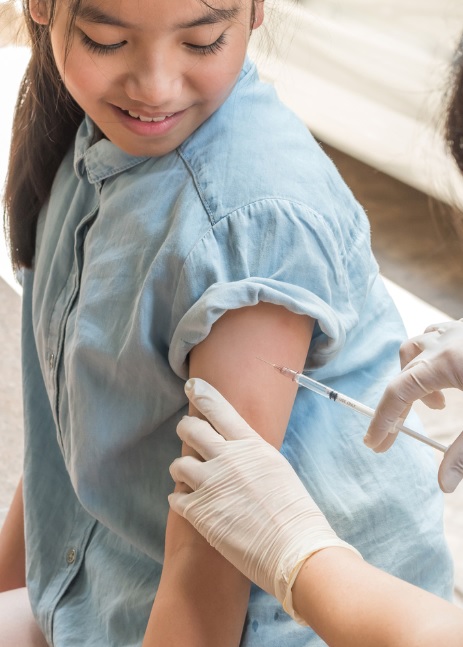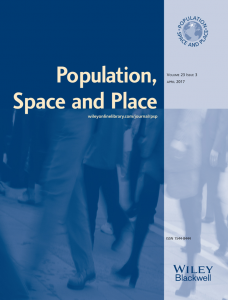Vaccine frictions – one rationality does not fit all
by Mikko J. Virtanen, Tampere University, Finland · Published · Updated

This blog piece highlights some points of my on-going multi-sited research project on HPV vaccination in Finland. The findings presented are based on my open access research article, What kind of ‘a girls’ thing’?, published in Sociology of Health and Illness.
When you are vaccinated, you get protection against the cancer‐causing HP virus.
On the front page of the Finnish HPV vaccination campaign site.
That vaccine protects from papillomavirus (not directly even from cervical cancer), which is very effectively prevented by using a condom.
A vaccination-aged girl’s comment in an Internet peer discussion forum, demi.fi
The Finnish HPV vaccination (HPVV) campaign mediates the official public health aim – the reduction of cervical cancer occurrences – and the individual lives of the campaign targets –vaccination-aged girls – who have the final veto over whether to have the vaccination. In so doing, the campaign frames the girls as individually rational health subjects. However, when considering their own health rationally, vis-á-vis a sexually transmitted HP virus, some adolescent girls opt out of the vaccine in favour of other – for themselves more rational – ways to protect against the cancer.
The virus, the cancer
The main aim of HPVV campaigns is to reduce the incidence of cervical cancer. However, the vaccine is not against the cancer, but rather against a virus. That virus – HPV – in fact causes a sexually transmitted infection (STI). This infection is very common and is actually the most common STI in the world, as more than three out of four people will be infected during their lifetime. Yet about 90% of infections cause no symptoms and resolve spontaneously.
There is a clear link between this very common STI-causing virus and cervical cancer. In scientific parlance, HPV is considered a necessary, but not sufficient, factor in the development of the cancer. However, in Finland – the target country for my case study – the actual cancer incidence is relatively low: four out of 100,000 women get cervical cancer during their lifetimes.
Campaign framing: be wise and arm yourself against the deadly cancer
To achieve high coverage, the Finnish HPVV campaign has a double focus. First, it is tailored to be familiar and interesting to adolescent girls, to ‘satisfy [their] “social worlds” to become embedded in them’ (Paul et al. 2018: 69). Second, although the ultimate goal of the campaign was decided and justified in public health terms, an individual framing of the vaccination sells better than a collective one.
Consequently, the ‘a girls’ thing’ campaign was created both to embed the vaccine in the social world of vaccination-aged girls and to address them in terms of their individual health. The tricky issues of sexual transmission, genderedness and the virus–cervical cancer link are pushed into the background in the pink campaign materials, and the message is kept clear: the papillomavirus is common and causes cervical cancer; cervical cancer is deadly; vaccination is the most effective defence against this insidious cancer; and it is rational for one to consent.
The campaign is not neutral. In addressing its targets, it also shapes the adolescent girls and their lives. In other words, the campaign materials both address and create an individually rational and responsible female health subject: it is reasonable to take good care of one’s health and a responsible person has the vaccination. This framing was both confirmed and contested by the girls themselves.
Girls’ framings: the cancer and the rational individual, but not necessarily the vaccine
Adolescent girls frame the issue and process the consent decision as part of their own lives. In so doing, they both adopt and reject parts of the official campaign framing. The general cancer frame is not questioned. Some point out the relatively low number of cervical cancer cases, but, in general, the culturally anchored image of cancer as insidious and deadly remains prevalent, and it is therefore only rational for one to protect oneself against it.
The second common framing in both the campaign and the girls’ online discussions is one of individual rationality. Even though the issue is also considered socially – and mothers’ opinions are especially important when discussing consent – the target and subject of the vaccination is the adolescent girl herself. This is physically obvious, as the cervix and the potential cancer are inside the girl’s own body and the shot is delivered into her upper arm. Consequently, the burdensome choice of whether to undergo vaccination is addressed by posing an individual-rational question: is it reasonable for me, in the context of my very own, unique and morally consistent life, to have the shot?
Yet asking this question challenges the campaign framing of the vaccine as the most rational prevention method for everyone. For one girl, for instance, it might be more reasonable ‘to avoid getting the virus by simply not having any one-night stands’ and for another ‘by using a condom.’ In addition, pap screening – which is well established and relatively effective in Finland – has been suggested as a more rational protection method than the vaccine:
‘[As] the vaccine prevents the preliminary stages of the cancer and not the whole cancer … the cancer can be prevented by visiting the gynaecologist, and, if some preliminary stages are found, they can be taken out somehow.’
Online contributions to a discussion about the HPV vaccination on demi.fi
Interestingly, the individual-rational framing of the vaccination poses a threat to the crucial nexus of the campaign between the individual and population health rationalities. On the one hand, vaccination-aged girls are interested in and responsible for their personal health and process the HPVV consent accordingly in rational terms. On the other, when it comes to protecting oneself against a sexually transmitted virus, one rationality does not fit all.
References
Paul, K.T., Wallenberg, I. and Bal, R. (2018) Putting public health infrastructures to the test: introducing HPV vaccination in Austria and the Netherlands, Sociology of Health & Illness, 40, 1, 67–81. (link: https://onlinelibrary.wiley.com/doi/full/10.1111/1467-9566.12595)
Silvast, A. and Virtanen, M. (2019) Assemblages of framings and tamings: multi-sited analysis of infrastructures as a methodology, Journal of Cultural Economy 12, 6, 461–477. (link: https://www.tandfonline.com/doi/full/10.1080/17530350.2019.1646156)
Virtanen, M. (2019) What kind of ‘a girls’ thing’? Frictions and continuities in the framing and taming of the HPV vaccination in Finland, Sociology of Health & Illness 41, 4, 789–805. (link: https://onlinelibrary.wiley.com/doi/full/10.1111/1467-9566.12853)
Biographical note:
Mikko J. Virtanen works as a postdoctoral research fellow at Tampere University and as a part-time lecturer in sociology at the University of Helsinki. He is currently enlarging his multi-sited HPVV research (see also Silvast and Virtanen 2019) by focusing on the practice of delivering the vaccine by Finnish school nurses.





1520-6688/asset/Capture.jpg?v=1&s=b5076c49a7d1c5f1b9cf0dd9cd292394a3be81cc)